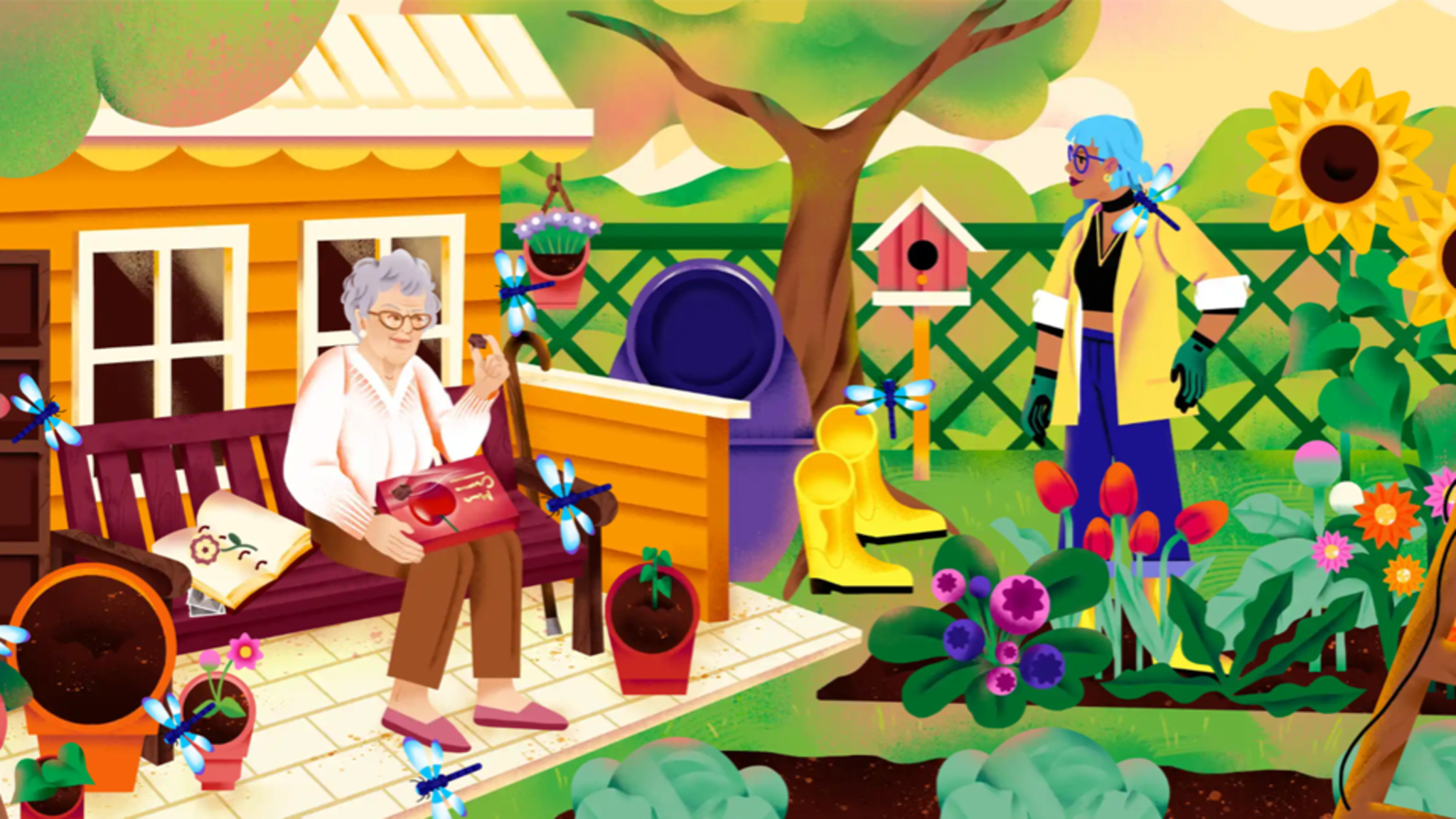
On its surface, Finding Hannah is a bright and playful hidden-object game — but dig a little deeper and you’ll find something much more.
The Hannah of Finding Hannah is a 38-year-old Berlin resident trying to navigate career, relationships (including with her best friend/ex, Emma), and the nagging feeling that something’s missing in her life. To help find answers, Hannah turns to her nurturing grandmother and free-spirited mother — whose own stories gradually come into focus and shape the game’s message as well.
“It’s really a story about three women from three generations looking for happiness,” says Franziska Zeiner, cofounder and co-CEO of the Fein Games studio. “For each one, times are changing. But the question is: Are they getting better?”

To move the story along, players comb through a series of richly drawn scenes — a packed club, a bustling train, a pleasantly cluttered bookstore. Locating (and merging) hidden items unlocks new chapters, and the more you find, the more the time-hopping story unfolds. The remarkable mix of message and mechanic made the game a 2023 Apple Design Award finalist, as well as a Cultural Impact winner in the 2023 App Store Awards.
Fein Games is the brainchild of Zeiner and Lea Schönfelder, longtime friends from the same small town in Germany who both pursued careers in game design — despite not being all that into video games growing up. “I mean, at some point I played The Sims as a teenager,” laughs Zeiner, “but games were rare for us. When I eventually went to study game design, I felt like I didn’t really fit in, because my game literacy was pretty limited.”
The goal is to create for people who enjoy authentic female experiences in games.
Lea Schönfelder, cofounder and co-CEO of Fein Games
Cofounder and co-CEO Schönfelder also says she felt like an outsider, but soon found game design a surprisingly organic match for her background in illustration and animation. “In my early years, I saw a lot of people doing unconventional things with games and thought, ‘Wow, this is really powerful.’ And I knew I loved telling stories, maybe not in a linear form but a more systematic way.” Those early years included time with studios like Nerial and ustwo Games, where she worked on Monument Valley 2 and Assemble With Care.
Drawing on their years of experience — and maybe that shared unconventional background — the pair went out on their own to launch Fein Games in 2020. From day one, the studio was driven by more than financial success. “The goal is to create for people who enjoy authentic female experiences in games,” says Schönfelder. “But the product is only one side of the coin — there’s also the process of how you create, and we’ve been able to make inclusive games that maybe bring different perspectives to the world.”

Finding Hannah was driven by those perspectives from day one. The story was always meant to be a time-hopping journey featuring women in Berlin, and though it isn’t autobiographical, bits and pieces do draw from their creators’ lives. “There’s a scene inspired by my grandmother, who was a nurse during the second world war and would tan with her friends on a hospital roof while the planes circled above,” says Schönfelder. The script was written by Berlin-based author Rebecca Harwick, who also served as lead writer on June’s Journey and writer on Switchcraft, The Elder Scrolls Online, and many others.
In the beginning, I felt like I wasn’t part of the group, and maybe even a little ashamed that I wasn’t as games-literate as my colleagues. But what I thought was a weakness was actually a strength.
Lea Schönfelder, cofounder and co-CEO of Fein Games
To design the art for the different eras, the team tried not to think like gamers. “The idea was to try to reach people who weren’t gamers yet, and we thought we’d most likely be able to do that if we found a style that hadn’t been seen in games before,” says Zeiner. To get there, they hired Elena Resko, a Russian-born artist based in Berlin who’d also never worked in games. “What you see is her style,” says Schönfelder. “She didn’t develop that for the game. I think that’s why it has such a deep level of polish, because Elena has been developing her style for probably a decade now.”
And the hidden-object and merge gameplay mechanic itself is an example of sticking with a proven success. “When creating games, you usually want to invent a new mechanic, right?” says Schönfelder. “But Finding Hannah is for a more casual audience. And it’s been proven that the hidden-object mechanic works. So we eventually said, ‘Well, maybe we don’t need to reinvent the wheel here,’” she laughs.

The result is a hidden-object game like none other, part puzzler, part historically flavored narrative, part meditation on the choices faced by women across generations. And it couldn’t have come from a team with any other background. “In the beginning, I felt like I wasn’t part of the group, and maybe even a little ashamed that I wasn’t as games-literate as my colleagues,” says Schönfelder. “But what I thought was a weakness was actually a strength. Players don’t always play your game like you intended. And I felt a very strong, very sympathetic connection to people, and wanted to make the experience as smooth and accessible as possible. And I think that shows.”
Learn more about Finding Hannah
Download Finding Hannah from the App Store
Behind the Design is a series that explores design practices and philosophies from finalists and winners of the Apple Design Awards. In each story, we go behind the screens with the developers and designers of these award-winning apps and games to discover how they brought their remarkable creations to life.